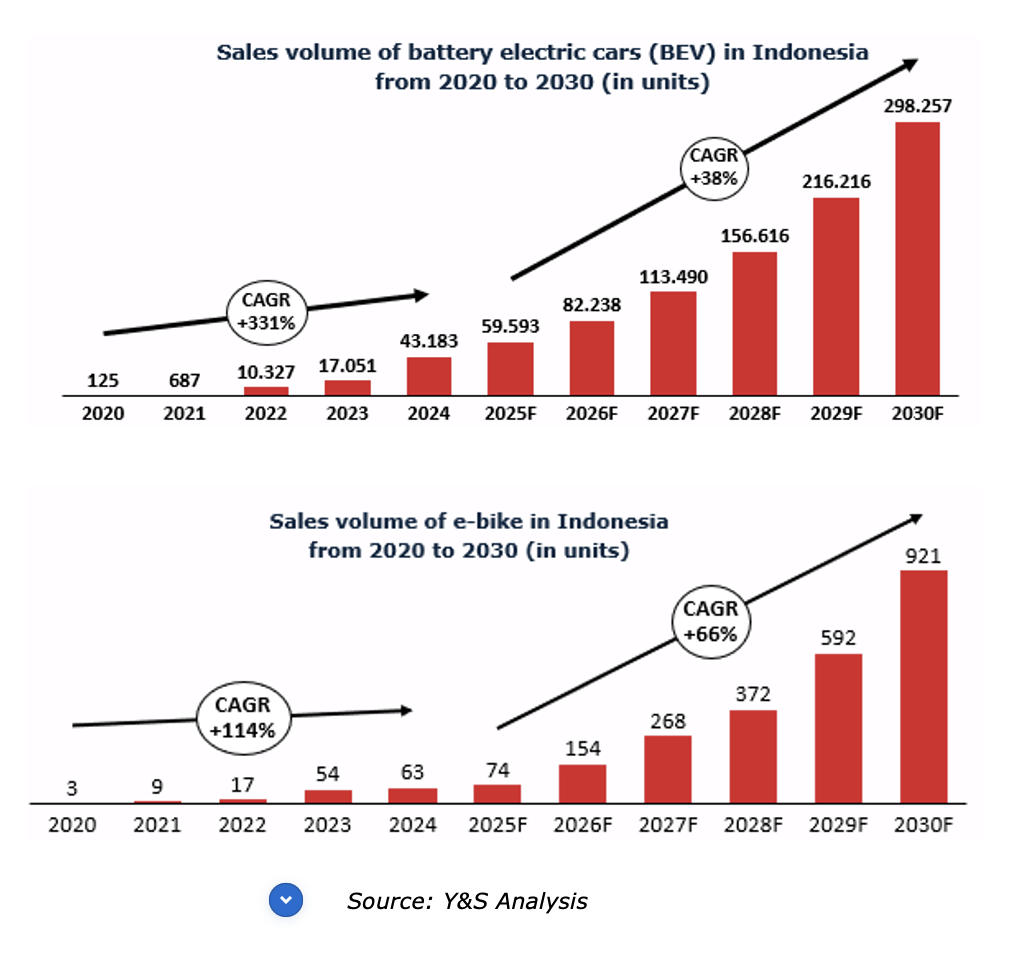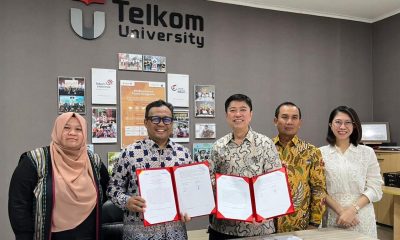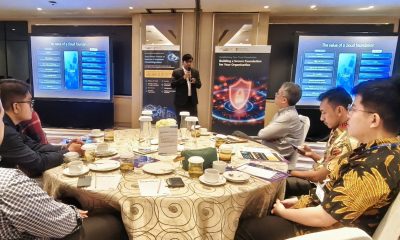Y&S Insights
Y&S Insights: Indonesia’s EV Market at an Inflection Point
By Septian Nudin, Consultant at YAMADA Consulting & Spire

Y&S Insights ● Indonesia is entering a pivotal decade for electric vehicles (EVs). The country has moved past the early awareness stage, and the market is showing signs of acceleration, fuelled by policy incentives, new manufacturing capacity, and rising consumer interest.
Market Momentum
EV adoption in Indonesia is accelerating. Battery electric vehicle (BEV) sales grew nearly 2.5x in 2024, reaching 43,183 units, and are projected to rise to 298,257 units by 2030. Growth is supported by government incentives, falling battery costs, and the introduction of more affordable entry-level models.
Motorcycles, Indonesia’s dominant mode of transport, are also a key focus with sales reaching ~63,000 units in 2024 and projected to rise to ~921,000 units by 2030. Key drivers include two-wheeler electrification policies, rising fuel prices, expanding charging and battery-swapping infrastructure, and OEM partnerships offering low-cost models for mass-market adoption.
Policy Tailwinds
Government support remains a critical growth driver. The 2025 incentive package extends VAT relief (up to 10% for locally produced EVs) and pushes for higher local content. A Rp7 million subsidy for e-motorcycles, paused in early 2025 but restarted in August, illustrates the direct link between subsidies and demand. Source: PMK No. 12, Tahun 2025
Infrastructure Expansion
Charging accessibility is improving. As of early 2025, there were nearly 3,200 public charging points (SPKLU) across more than 2,100 locations, led by state utility PLN. While coverage is still concentrated in Java, expansion into second-tier cities is underway. Source: PLN
Industry Investments
Major global players are betting on Indonesia. BYD is building a US$1 billion plant in West Java with an annual capacity of 150,000 units, scheduled for completion by the end of 2025. Alongside CATL and LG’s battery ventures, this positions Indonesia as a regional EV and battery hub.
Opportunities Ahead
Fleet electrification: Ride-hailing, logistics, and corporate fleets can unlock scale through bundled vehicle, charging, and financing solutions.
Two-wheeler adoption: Delivery and commuting segments will benefit most from renewed subsidies and potential battery-swap models.
Charging ecosystems: High-dwell locations such as retail, offices, and apartments present monetization opportunities for charging operators.
Local content partnerships: Joint ventures and component localization unlock both tax incentives and long-term competitiveness. Source: Y&S Analysis
Key Challenges
Barriers remain in affordability, charging reliability, and resale value perception. Overcoming these will be essential for EVs to reach mass-market penetration.
Conclusion
With strong policy support, major OEM investment, and a clear demand pipeline, Indonesia’s EV market is on the cusp of rapid growth. The next two to three years will determine whether momentum converts into mass adoption and whether Indonesia can position itself as a Southeast Asian EV hub.●
YAMADA Consulting & Spire (Y&S) merupakan perusahaan riset dan konsultasi bisnis terkemuka di dunia dengan kantor pusat di Tokyo, Jepang, dan kantor pusat regional Asia Pasifik di Singapura. Sebelum diakuisisi oleh Yamada Consulting Group, perusahaan ini dikenal dengan nama Spire Research and Consulting.
Y&S Indonesia | Menara Astra Lt. 25 Unit 25D, Jalan Jend. Sudirman Kav. 5-6, Jakarta 10220, Telp/Faks: (021) 50889816 | www.yamada-spire.com





















